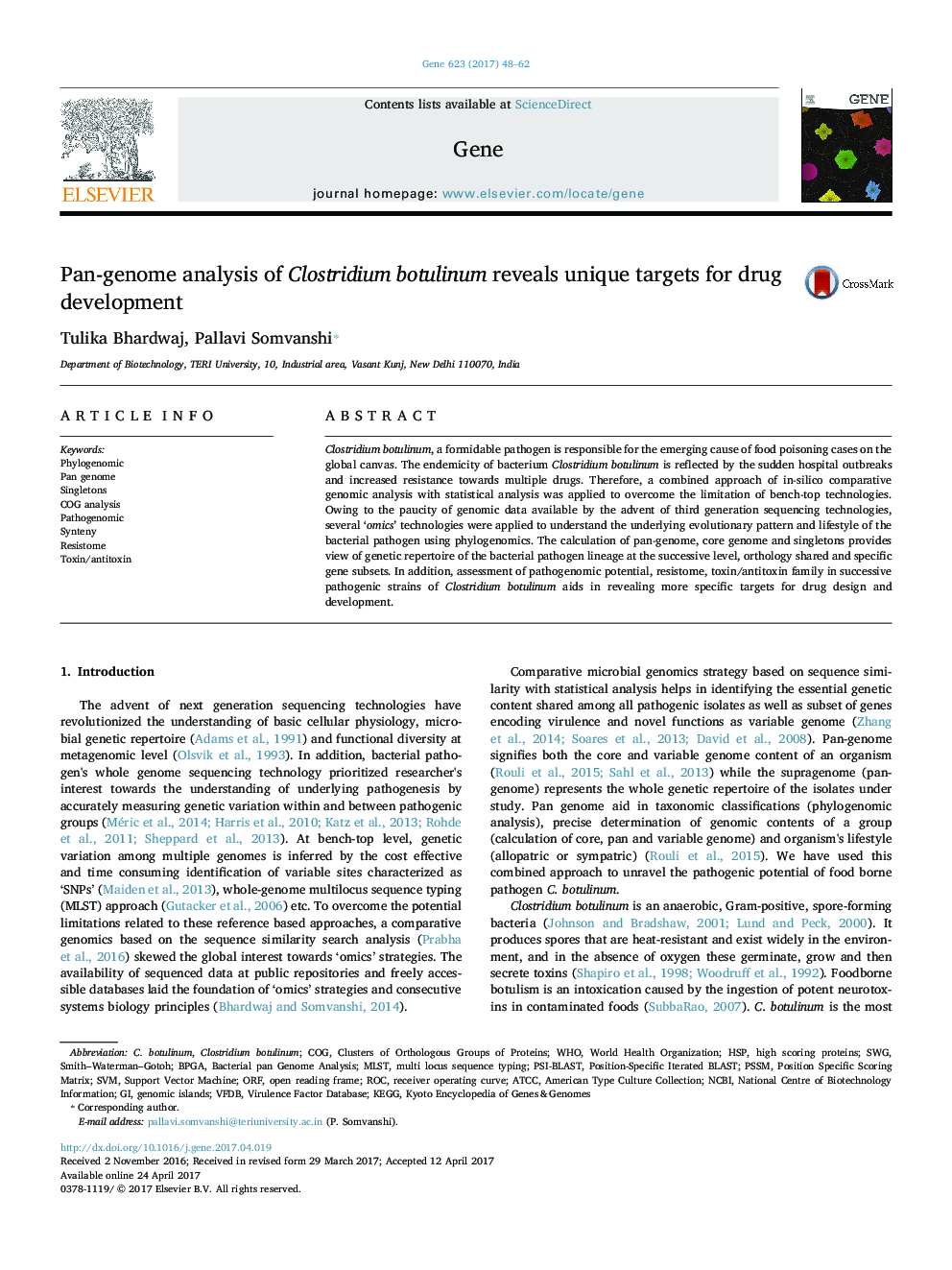| Article ID | Journal | Published Year | Pages | File Type |
|---|---|---|---|---|
| 5589422 | Gene | 2017 | 15 Pages |
Abstract
Clostridium botulinum, a formidable pathogen is responsible for the emerging cause of food poisoning cases on the global canvas. The endemicity of bacterium Clostridium botulinum is reflected by the sudden hospital outbreaks and increased resistance towards multiple drugs. Therefore, a combined approach of in-silico comparative genomic analysis with statistical analysis was applied to overcome the limitation of bench-top technologies. Owing to the paucity of genomic data available by the advent of third generation sequencing technologies, several 'omics' technologies were applied to understand the underlying evolutionary pattern and lifestyle of the bacterial pathogen using phylogenomics. The calculation of pan-genome, core genome and singletons provides view of genetic repertoire of the bacterial pathogen lineage at the successive level, orthology shared and specific gene subsets. In addition, assessment of pathogenomic potential, resistome, toxin/antitoxin family in successive pathogenic strains of Clostridium botulinum aids in revealing more specific targets for drug design and development.
Keywords
Clusters of Orthologous Groups of proteinsSingletonsROCNCBIORFC. botulinumCoGPSSMSyntenySWGMLSTATCCHspPSI-BLASTPosition-Specific Iterated BLASTMulti locus sequence typingGenomic islandsKEGG یا Kyoto Encyclopedia of Genes and Genomes World Health OrganizationPhylogenomicopen reading framePosition specific scoring matrixSVMSupport vector machineAmerican Type Culture CollectionResistomereceiver operating curveClostridium botulinumWHO
Related Topics
Life Sciences
Biochemistry, Genetics and Molecular Biology
Genetics
Authors
Tulika Bhardwaj, Pallavi Somvanshi,
